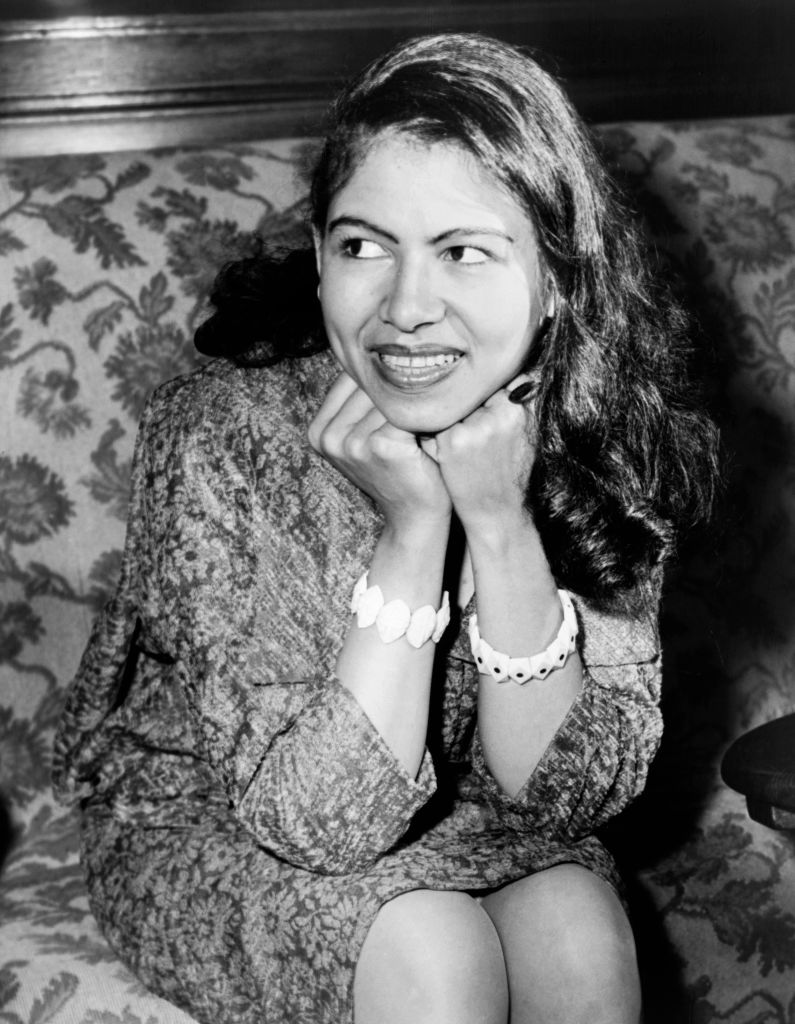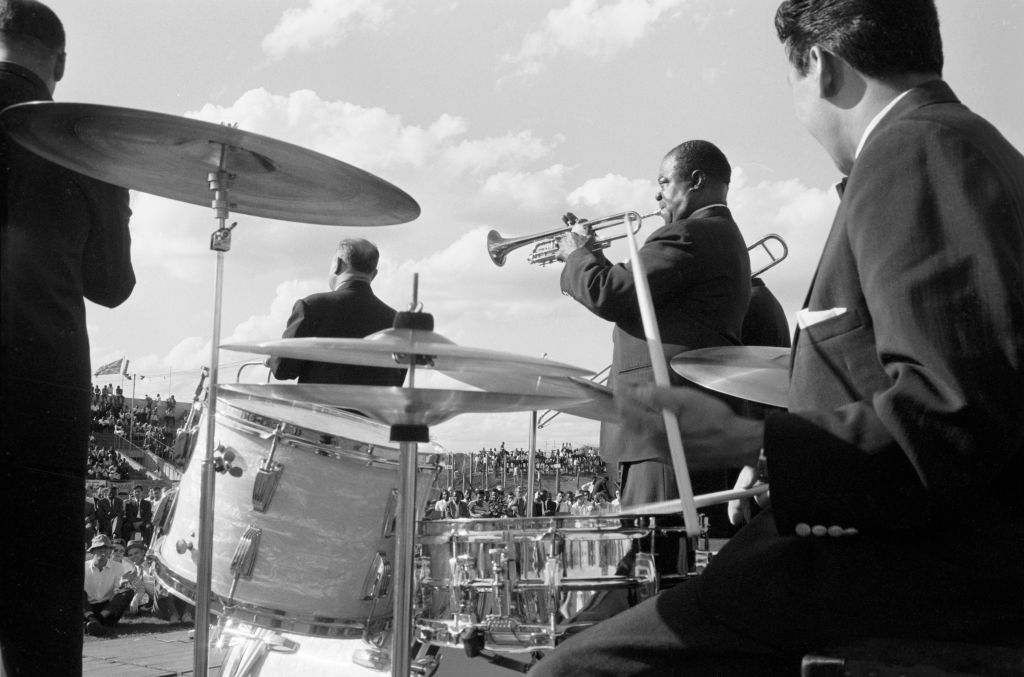
In February 1958, 26-year-old African-American pianist Philippa Schuyler paid a visit to Morocco. Afterward, her mother received an enthusiastic letter from the United States Foreign Service: “Philippa came saw and conquered Rabat and Casablanca. She was interviewed over the radio and gave concerts to two enthusiastic audiences... We were all very proud and happy over her performances here.”
The Morocco stops marked the culmination of a 14-country tour of Africa that began the previous month in Nigeria. Along the way, Schuyler met Ethiopian emperor Haile Selassie, Ghana’s Prime Minister Kwame Nkrumah, President William Tubman of Liberia, as well as a host of royals, cabinet members, dignitaries, and university students from across the continent. Black newspapers in the United States hailed it as “the most extensive tour ever made by an American performer in Africa.”
Together, these accounts—one sent to her doting mother and carefully placed within the pages of a scrapbook, the other sent across the wires to be printed for an African-American reading public—tell a story that holds especially important meaning during this year’s Black History Month honoring “African Americans and the Arts.” The theme was chosen by the Association for the Study of African American Life and History (which was founded by prolific historian Carter G. Woodson) to highlight how, “[i]n the fields of visual and performing arts, literature, fashion, folklore, language, film, music, architecture, culinary and other forms of cultural expression, the African American influence has been paramount.” Looking back to the winter of 1958 helps us understand that the reach of that influence extended far beyond the many artistic fields where African Americans have made their marks.
Read More: 9 Black History Month Ideas to Implement ASAP
Schuyler’s tour came at a fraught moment in history. Back home in the United States, African Americans were facing the relentless drumbeat of racial exclusion, persecution, and terror. As the only child of George, a Black newspaper editor and author, and Josephine, a white iconoclast from a cattle-ranching family in Texas that disowned her when she married, Schuyler had experienced her share of the country’s racism first-hand. Indeed, despite her precocious musical talent, which saw her mastering classics and writing original compositions from an early age (and which her parents proudly trumpeted in the press), Schuyler found few opportunities to grace national stages. Instead, she spent most of her career abroad.
The United States’ treatment of African Americans at home exposed it to criticism on the world stage. During the Cold War, in everything from propagandistic films to offers of refuge to African Americans, the Soviet Union regularly seized upon U.S. racism as a means of promoting the communist cause over capitalism—as well as to advance a more nefarious agenda. According to the historian Peniel Joseph, “Russian Communist officials, apparatchiks, and newspapers saw in America’s unfolding racial crisis an opportunity to shield the Soviet Union from criticism of its own human rights violations, creeping authoritarianism, and barely concealed imperial ambitions.” The reality of U.S. racism thus threatened to delegitimize the country’s efforts to win democratic allies abroad and put it at a moral disadvantage vis-a-vis the Soviet Union.
When Schuyler set off on her tour, the African continent was emerging from the shadow of European colonial rule. During this period of celebration and possibility, African Americans often had a front-row seat to independence festivities that received ample news coverage. The publisher of outlets like Ebony and Jet took great expense to “report the progress of independence abroad, and to counter the stereotypical images of Blacks in the Diaspora with countless, meaningful articles about Africa, the cradle of all mankind, and its rich cultural heritage.”
As this occurred, both the Soviet Union and the United States raced to win newly independent nations in Africa to their respective sides in the Cold War. Following a 1957 visit to Morocco, Ghana, Liberia, Uganda, Ethiopia, Sudan, Libya and Tunisia, then-Vice President Richard Nixon sent a report to President Dwight Eisenhower. “Africa,” he told his boss, “is a priority target for the international communist movement… They are trying desperately to convince the peoples of Africa that they support more strongly than we do their natural aspirations for independence, equality and economic progress.” In short, the U.S. needed to curry favor within Africa to gain an advantage over the Soviet Union in the region.
Read More: Queen Elizabeth II's Death Is a Chance to Examine the Present-Day Effects of Britain's Colonial Past
To counter Soviet messaging about American racism, the U.S. government took bold action. In 1955, the country appointed jazz musicians like Dizzy Gillespie and Duke Ellington to perform around the world as cultural ambassadors. Nicknamed the “jazz ambassadors,” their responsibilities came with profound moral dilemmas over representing a country that failed to live up to its obligations to its own citizens. But the ambassadors also found in their high-profile roles an opportunity to showcase their humanity and artistic prowess, promote the fight for equality back home, and build connections abroad.

The Moroccan leg of Schuyler’s African tour was part of a similar effort to quell criticism of the country and curry global favor. Schuyler devotes a chapter of her travel memoir, Adventures in Black and White, to her visit to the continent, which was hosted by an array of patrons. In it, she details the sights, smells, cuisines, and idiosyncrasies of the villages, towns, and urban centers she stopped in to give concerts in everything from private residences to grand public halls, receiving warm receptions at every turn.
Read More: How the U.S. Used Jazz as a Cold War Secret Weapon
Having gone on concert tours around the world by herself since her early teens (including to Africa, several times), Schuyler had an independent spirit, a vast network of contacts, a well of knowledge and curiosity about religious traditions and social customs, a keen eye for detail, and a flair for storytelling. In other words, she had her own reasons, resources, and rewards for going on the tour, beyond anything related to her country’s geopolitical standing.
By the time she made it to Morocco, Schuyler was exhausted and sick (“my stomach felt aflame," she wrote, “and as if riddled by bullet holes”). Nonetheless, she somehow summoned the energy to set out for concerts in Casablanca and Rabat. “The next afternoon, I gave another recital, under the patronage of Ambassador Cavendish Cannon, and Her Royal Highness, Princess Lalla Aicha, Morocco's leading feminist, and eldest daughter of Sultan Mohammed V. Her younger sister, Princess Lalla Nezha, a beautiful girl dressed in smart Western clothes, attended the performance, and was photographed with me afterwards.”

In hosting Schuyler, the U.S. ambassador was able to shine a bright spotlight on a talented Black pianist as a symbol of national pride and racial progress. In showing up as her full worldly, dazzling self, Schuyler also served as a dazzling model of modern womanhood to which Moroccan women could aspire.
With that, Schuyler ended her African tour, having accomplished a complex, no-doubt-exhausting feat. Her visit served, at once, as a showcase for her prodigious talents, a one-woman charm offensive, a reputational victory for the United States, and as a source of racial pride among African Americans—all while signaling the vibrant energy of a continent looking towards the future.
Tamara J. Walker is an Associate Professor of Africana Studies at Barnard College, co-founder of The Wandering Scholar, and the author of Beyond the Shores: A History of African Americans Abroad.
Made by History takes readers beyond the headlines with articles written and edited by professional historians. Learn more about Made by History at TIME here. Opinions expressed do not necessarily reflect the views of TIME editors.
More Must-Reads From TIME
- The 100 Most Influential People of 2024
- Coco Gauff Is Playing for Herself Now
- Scenes From Pro-Palestinian Encampments Across U.S. Universities
- 6 Compliments That Land Every Time
- If You're Dating Right Now , You're Brave: Column
- The AI That Could Heal a Divided Internet
- Fallout Is a Brilliant Model for the Future of Video Game Adaptations
- Want Weekly Recs on What to Watch, Read, and More? Sign Up for Worth Your Time
Write to Tamara J. Walker / Made by History at madebyhistory@time.com
